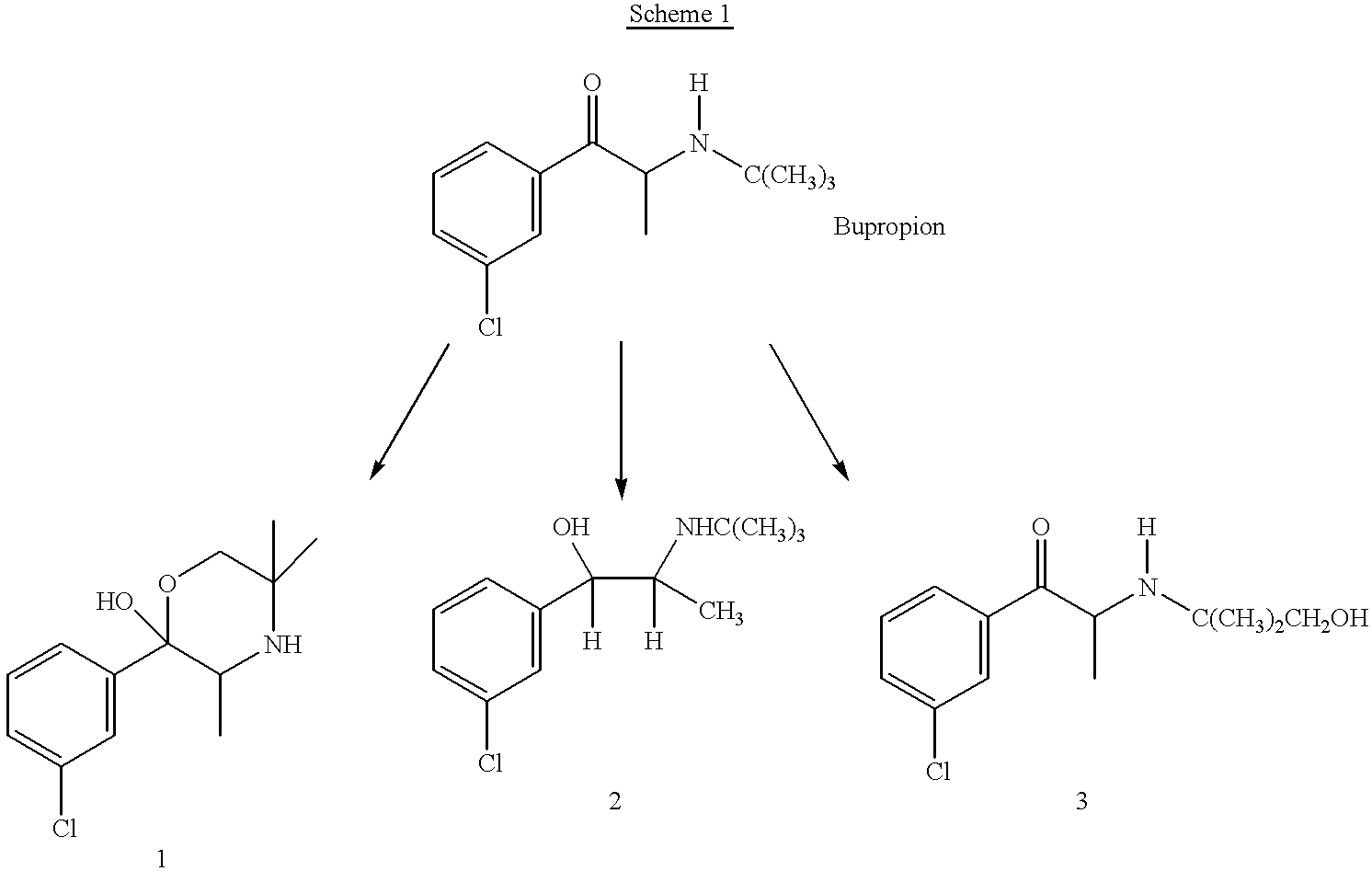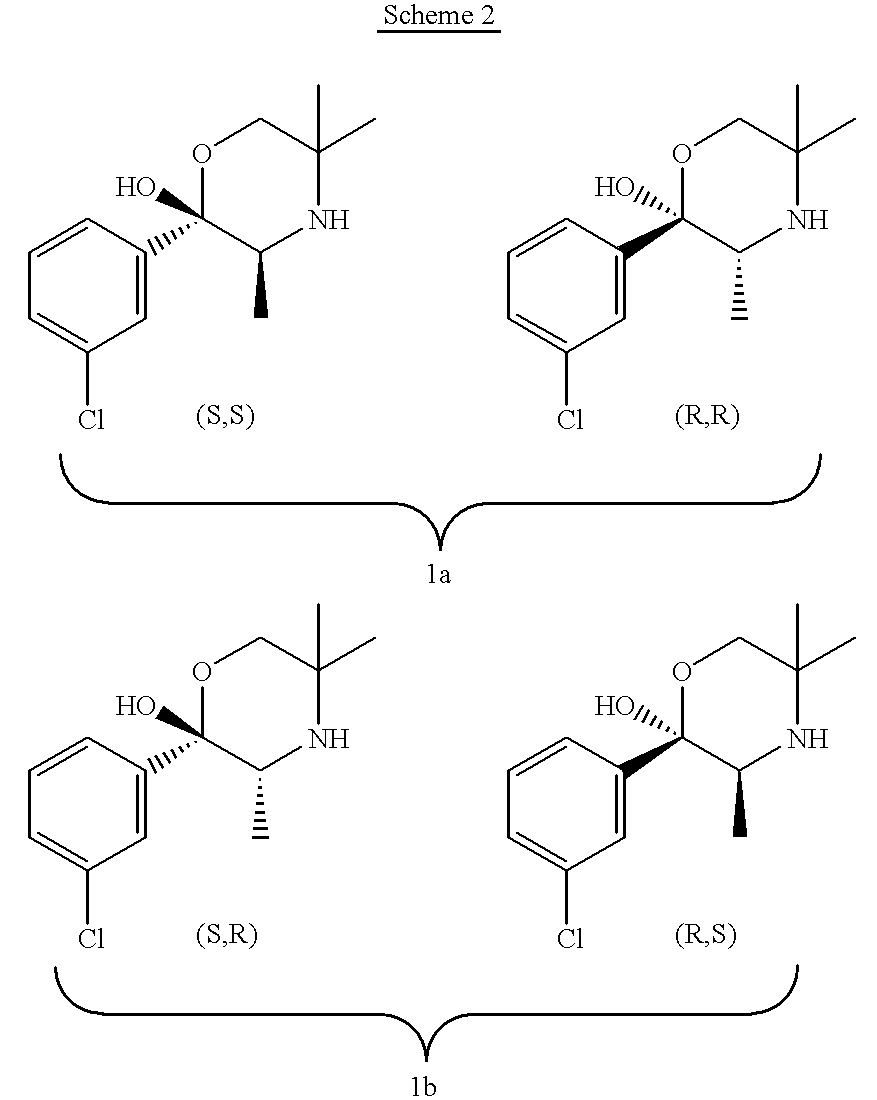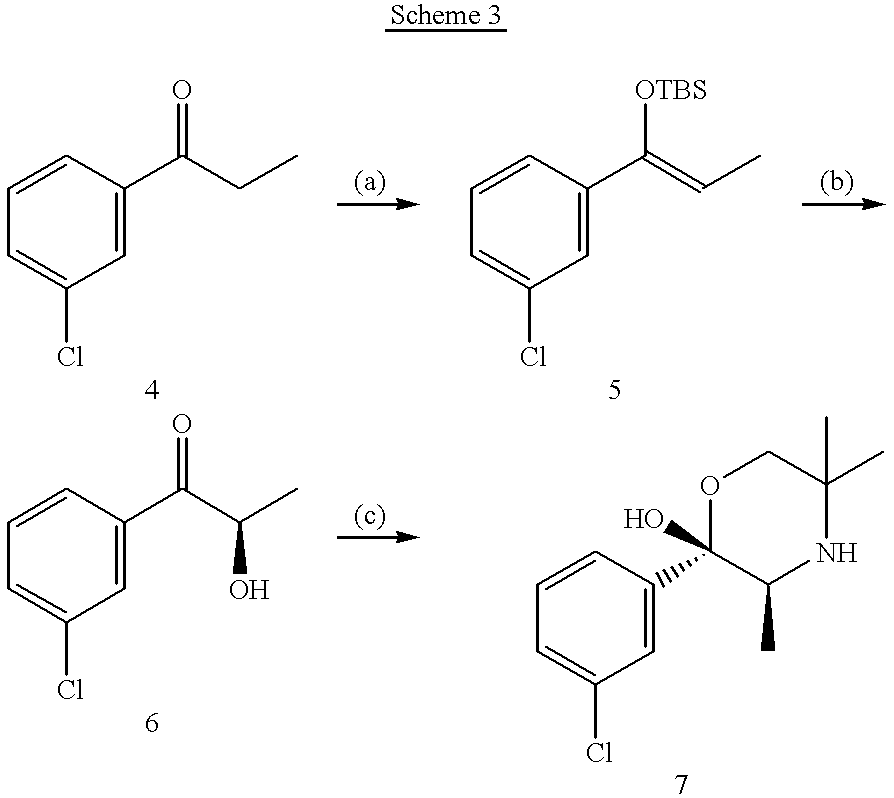Bupropion metabolites and methods of use
- Summary
- Abstract
- Description
- Claims
- Application Information
AI Technical Summary
Benefits of technology
Problems solved by technology
Method used
Image
Examples
first embodiment
the invention is a method of treating or preventing a disorder that is ameliorated by the inhibition of neuronal monoamine reuptake which comprises administering to a patient in need of such treatment or prevention a therapeutically or prophylactically effective amount of a bupropion metabolite, or a pharmaceutically acceptable salt, solvate, or clathrate thereof. Preferably, the bupropion metabolite is optically pure. More preferably, the bupropion metabolite is optically pure (S,S)-hydroxybupropion. In a preferred method encompassed by this embodiment, adverse effects associated with the inhibition of dopamine reuptake are reduced or avoided.
In another preferred method encompassed by this embodiment, the bupropion metabolite or pharmaceutically acceptable salt, solvate, or clathrate thereof is adjunctively administered with an additional pharmacologically active compound, i.e., the bupropion metabolite and an additional pharmacologically active compound are administered as a combi...
second embodiment
the invention encompasses a method of treating or preventing erectile dysfunction which comprises administering to a patient in need of such treatment or prevention a therapeutically or prophylactically effective amount of a bupropion metabolite or a pharmaceutically acceptable salt, solvate, or clathrate thereof. Preferably, the bupropion metabolite is optically pure. More preferably, the bupropion metabolite is optically pure (S,S)-hydroxybupropion.
In a preferred method encompassed by this embodiment, the bupropion metabolite or pharmaceutically acceptable salt, solvate, or clathrate thereof is administered transdermally or mucosally (e.g., nasally, sublingually, or buccally).
In another preferred method encompassed by this embodiment, the bupropion metabolite or pharmaceutically acceptable salt, solvate, or clathrate thereof is adjunctively administered with a 5-HT.sub.3 antagonist.
third embodiment
the invention encompasses a method of treating or preventing an affective disorder which comprises administering to a patient in need of such treatment or prevention a therapeutically or prophylactically effective amount of a bupropion metabolite or a pharmaceutically acceptable salt, solvate, or clathrate thereof. Preferably, the bupropion metabolite is optically pure. More preferably, the bupropion metabolite is optically pure (S,S)-hydroxybupropion.
A particular preferred method encompassed by this embodiment is a method of treating or preventing depression. Another preferred method encompassed by this embodiment is a method of treating or preventing narcolepsy. Yet another preferred method encompassed by this embodiment is a method of treating or preventing nicotine addiction.
PUM
| Property | Measurement | Unit |
|---|---|---|
| Time | aaaaa | aaaaa |
| Time | aaaaa | aaaaa |
| Temperature | aaaaa | aaaaa |
Abstract
Description
Claims
Application Information
 Login to View More
Login to View More - R&D
- Intellectual Property
- Life Sciences
- Materials
- Tech Scout
- Unparalleled Data Quality
- Higher Quality Content
- 60% Fewer Hallucinations
Browse by: Latest US Patents, China's latest patents, Technical Efficacy Thesaurus, Application Domain, Technology Topic, Popular Technical Reports.
© 2025 PatSnap. All rights reserved.Legal|Privacy policy|Modern Slavery Act Transparency Statement|Sitemap|About US| Contact US: help@patsnap.com



